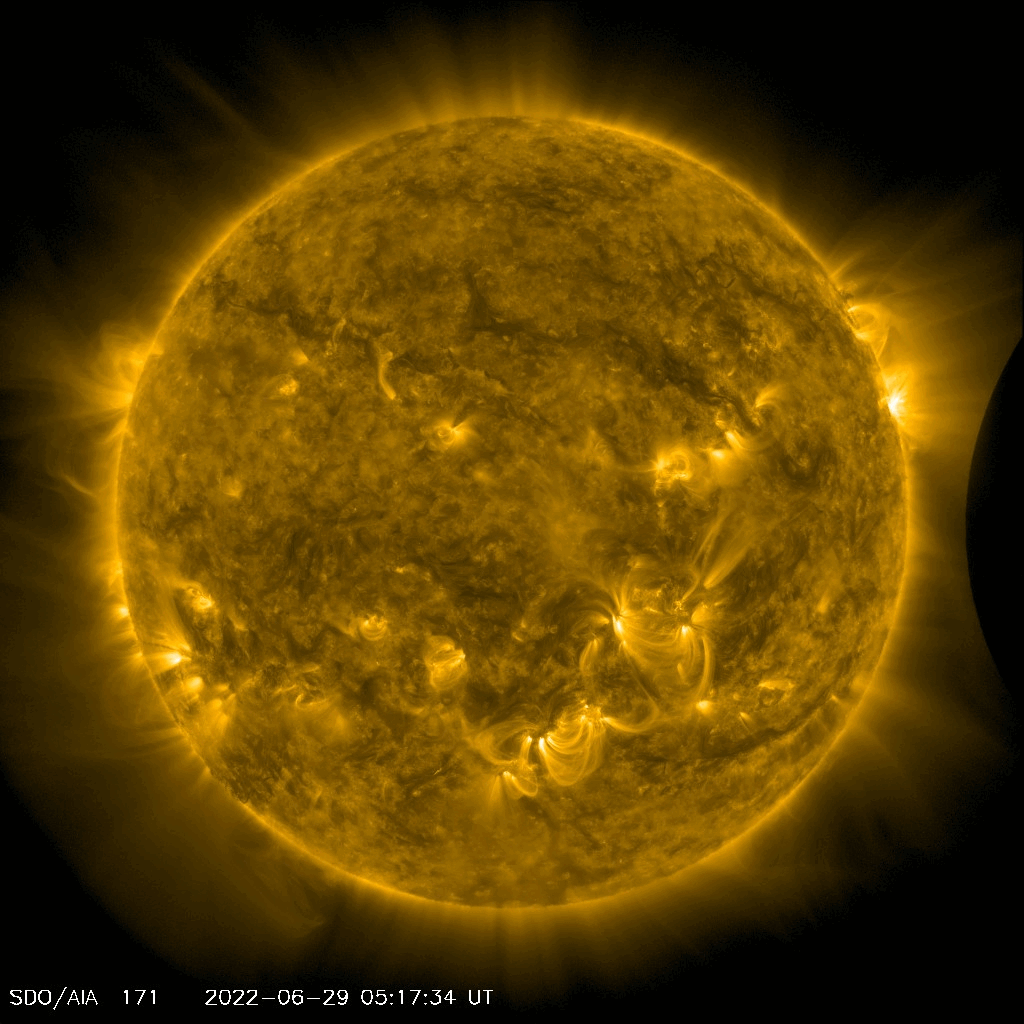Stunning solar eclipse caught by NASA in incredible closeup
The moon's mountains were 'backlit by solar fire' at the peak.

A sungazing spacecraft captured the moon passing in front of the face of the sun Wednesday (June 29).
NASA's Solar Dynamics Observatory caught the solar eclipse in action from its unique vantage point in space, the only spot where this eclipse was visible.
"At the peak of the eclipse, the moon covered 67% of the sun, and lunar mountains were backlit by solar fire," wrote SpaceWeather.com Wednesday morning EDT. (NASA had not yet commented about the event.)
Related: The sun's wrath: Worst solar storms in history

SDO usually looks at the sun as the source of space weather, or radiation in space that affects the Earth. Aspects it studies include the sun's magnetic field, sunspots and other aspects that influence activity during the regular 11-year solar cycle.
"SDO studies how solar activity is created and drives space weather. The spacecraft's measurements of the sun's interior, atmosphere, magnetic field, and energy output all work to help us understand the star we live with," NASA wrote of the mission.
SDO launched in February 2010 and forms part of a network of solar spacecraft from NASA and its partner agency, the National Oceanic and Atmospheric Administration (NOAA). The sun has been quite active lately and unusually early in its cycle, which should reach the peak around 2025.
Get the world’s most fascinating discoveries delivered straight to your inbox.
Scientists are interested in following the origin story of solar flares and accompanying coronal mass ejections of charged particles, which can create colorful auroras in Earth's atmosphere if the CMEs are aimed at our planet. Usually CMEs are harmless, but strong bursts may disrupt satellites, power lines and other infrastructure, which is why scientists are so keen on good predictions.
Notably, NASA has sent a close-up sungazing mission called Parker Solar Probe to investigate the corona or superheated outer region of the sun, as other satellites watch from further away to gain context.
Follow Elizabeth Howell on Twitter @howellspace. Follow us on Twitter @Spacedotcom or on Facebook.

Elizabeth Howell was staff reporter at Space.com between 2022 and 2024 and a regular contributor to Live Science and Space.com between 2012 and 2022. Elizabeth's reporting includes multiple exclusives with the White House, speaking several times with the International Space Station, witnessing five human spaceflight launches on two continents, flying parabolic, working inside a spacesuit, and participating in a simulated Mars mission. Her latest book, "Why Am I Taller?" (ECW Press, 2022) is co-written with astronaut Dave Williams.




